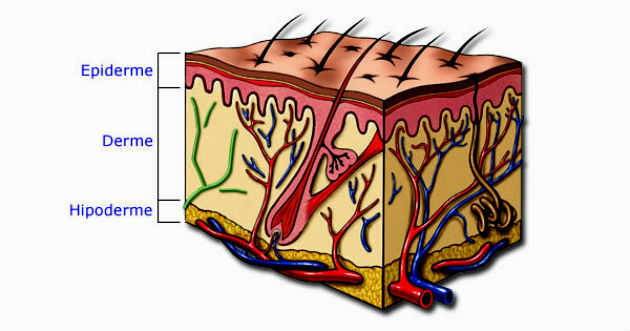Mites are animals that, as well as spiders and scorpions, they are included in the group of arachnids. In this group there is a group called Acari, which includes ticks and mites.
Mites are among the smallest existing arachnids, since most adults are about 0.25 to 0.75 mm in length. Currently, about 30,000 different species of mites are described, however it is estimated that there are still thousands of unknown species.
Read too:Main insect orders of economic importance
What are mites?

the mites are animals arthropods from the group of arachnids, more precisely from the Acari grouping. They have chelicerae as mouthparts, do not have antennae and have four pairs of legs. In addition, they have an undivided body, however, to facilitate the study, they can be divided into two exclusive tagmas (groups of specialized segments): gnathosome and idiosome.
The gnathosome is the most anterior part of the animal's body and corresponds only to the apex of the head, where they are located. the mouthparts and the mouth opening, while the idiosome is the posterior region and corresponds to most of the body of the mite. The gnathosome varies a lot in its characteristics depending on the diet adopted by the mite.
O the body of the mites is covered with hair, or bristles, some of which are sensory hairs. The arrangement of the bristles over the body of these animals is an important feature for species identification.
Mites are small animals and this guarantees a great evolutionary success. Their small dimensions allow them to colonize micro-habitats, which are not available to other larger species. Some species, for example, are found living inside hair follicles of mammals.
Do not stop now... There's more after the advertising ;)
Mites feeding
There are different species of mites, which they have a very diversified diet. the species herbivores they have needle-shaped chelicerae, and this structure is capable of penetrating the plant. Terrestrial species of mites carnivores that live in the soil feed on small arthropods and nematodes. Aquatic species feed largely on small crustaceans. Some mites feed on debris and carrion. There are also ectoparasites and endoparasites. Some species of mite also feed on human skin debris.
mite habitat
Mites are a very diverse group. Many people believe that all mites are parasitic animals, but this is not true. many free-living species. Some of the free-living species occur in terrestrial environments and are often found in plants, fallen leaves, slime, humus, soil and decayed wood. Other species are aquatic, being possible to find representatives in freshwater and saltwater environments. With regard to parasitic mites, these can be found living on or within vertebrates, invertebrates and plants.
Importance of mites
Many species of mites have medical importance, being responsible for causing diseases in human beings. Mites also cause diseases in domestic animals and are very important for agriculture, being natural enemies of some agricultural pests and also acting as pests.
Read too: Diseases that occur in both humans and other animals
Scabies or scabies
Scabies, also known as scabies, is a parasitosis caused by a species of mite, O Sarcopts scabiei variety hominis. Its main symptom is itchy skin, which is intensified at night. The mites cause small vesicles, which are mainly seen between the fingers, armpits, wrists, elbows, buttocks, areolas and genital region. The disease is spread through direct contact with another person who has scabies or through contact with contaminated objects and clothing. To learn more, read: Scabies.
Mites and allergic rhinitis
THErhinitis Allergic is a very common chronic disease and causes symptoms such as nasal obstruction (stuffy nose), sneezing, runny nose and itchy nose. It can be triggered or even aggravated by exposure to aeroallergens, which can disperse in the air and come into contact with the respiratory epithelium. You House dust mites have allergenic components, and the main source of aeroallergen of these animals is their feces.

Rhinitis attacks can be reduced if house mites are reduced. These animals live in dark, humid environments and with organic substances, which they feed on. Ours sheets, pillows and mattresses are the ideal places for the development of these animals, as the heat and moisture released by our bodies, along with the flaking of our skin, are all that the mites need to thrive.
One way to reduce the presence of mites in these places is take care of cleaning and periodically change mattresses and pillows. Sanitizing armchairs and sofas is also important to reduce dust mites. Special care must also be taken with stuffed animals, curtains, warm clothes and blankets, which spend a lot of time stored in closets, accumulating mites, dust and mold. Dusters and brooms tend to spread dust through the air, which can also cause mites to spread and cause allergies. The ideal, therefore, is the use of vacuum cleaners with a filter.
By Vanessa Sardinha dos Santos
Biology teacher



